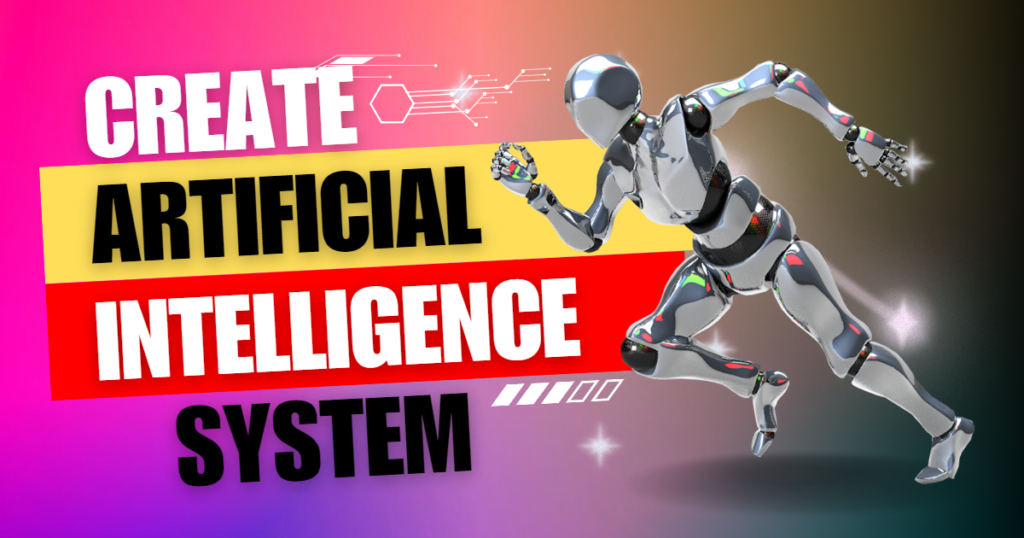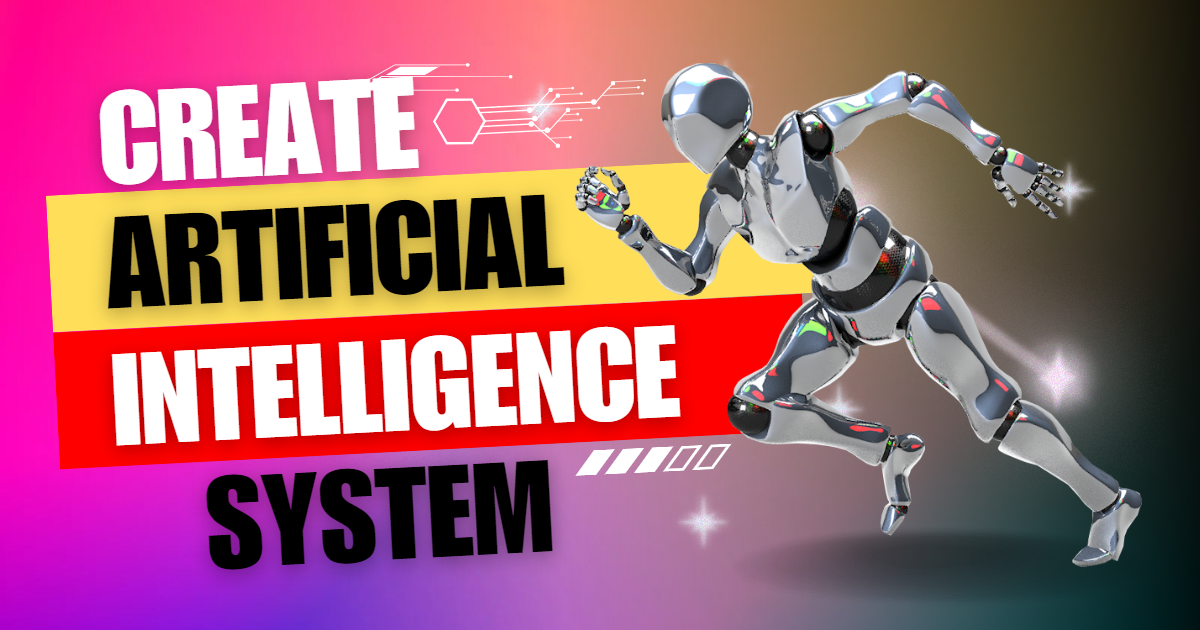How to build an AI System from scratch is a complex and time-consuming task that requires expertise in various fields such as computer science, machine learning, and programming. However, I can provide you with a high-level overview of the steps involved in creating an AI system. Keep in mind that the implementation details may vary depending on the specific AI application you have in mind.
Artificial Intelligence (AI) systems have revolutionized industries and transformed the way we interact with technology. Building an AI system involves a systematic approach that encompasses various stages, from problem definition to deployment and maintenance. In this blog, we will provide you with a comprehensive guide on how to build an AI system.

Let’s Start basics of “How to Build an AI System”
- Define the problem: Clearly define the problem you want your AI system to solve. This could be anything from image recognition to natural language processing or even game playing.
- Gather data: Collect a relevant and comprehensive dataset that will be used to train and test your AI system. The quality and diversity of the data are crucial factors that can significantly impact the performance of your AI.
- Preprocess the data: Clean and preprocess the collected data to remove noise, outliers, or any irrelevant information. Data preprocessing may involve tasks such as normalization, feature extraction, or data augmentation, depending on the specific problem.
- Choose an AI algorithm: Select the appropriate AI algorithm or model that suits your problem domain. This could be a traditional machine learning algorithm like Support Vector Machines or a deep learning model such as Convolutional Neural Networks or Recurrent Neural Networks.
- Train the AI model: Split the preprocessed data into training and validation sets. Use the training set to train your AI model by adjusting its parameters based on the input data and expected output. This process typically involves optimization techniques like gradient descent.
- Validate and optimize the model: Evaluate the trained model using the validation set to measure its performance. If the model’s performance is not satisfactory, you may need to tweak the algorithm, adjust hyperparameters, or consider using different techniques to improve its accuracy.
- Test the model: Once you are satisfied with the trained model’s performance, evaluate it on a separate test set to assess its real-world performance and generalization capabilities.
- Deploy and monitor: Integrate the trained AI model into a practical application or system. Monitor its performance in real-world scenarios and collect feedback to continuously improve and update the model.
It’s important to note that creating an AI system requires significant computational resources, programming skills, and domain expertise. Additionally, as an AI language model, I can provide guidance and answer questions, but I am not capable of physically creating an AI system so “How to build an AI System” is the First step to planning for creating an AI
Read more:https://updategadh.com/

How to Build an AI System Key Point!
- Problem:
The first crucial step in building an AI system is defining the problem you want to solve. Clearly articulate the objectives, constraints, and requirements of the problem. Understanding the problem domain is vital to determine the scope and feasibility of your AI system.
- Gathering and Preprocessing Data:
Data is the lifeblood of AI systems. Gather a comprehensive and relevant dataset that represents the problem domain. Preprocess the data by cleaning, normalizing, and transforming it as needed. Data quality and diversity significantly impact the performance and accuracy of your AI system.
- Selecting AI Techniques:
Choose the appropriate AI techniques based on the problem you’re addressing. This could involve traditional machine learning algorithms, deep learning models, natural language processing techniques, computer vision algorithms, or a combination of these. Consider the strengths and weaknesses of each technique and select the most suitable ones for your problem.
- Designing the Architecture:
Design the architecture of your AI system, which includes determining the components, algorithms, and models that will be used. Consider how these components will interact with each other and ensure scalability and flexibility. This stage lays the foundation for the implementation of your AI system.
- Training and Fine-tuning Models:
Train the AI models using the preprocessed data. Adjust the model’s parameters and hyperparameters to optimize its performance. Split the data into training, validation, and testing sets to ensure robust evaluation. Fine-tuning involves iteratively improving the model’s performance by adjusting various parameters and techniques.
- Evaluating and Validating:
Evaluate the performance of your AI system using appropriate evaluation metrics. Validate the system’s accuracy, precision, recall, F1 score, or other relevant measures. This step helps you understand how well your AI system is performing and if it meets the desired criteria. Continuously iterate and improve the system based on evaluation results.
- Deployment and Integration:
Deploy the trained AI system into a production environment. Integrate it with other systems, tools, or applications as necessary. Ensure the system is robust, efficient, and scalable for real-world usage. Conduct thorough testing and verification to minimize potential issues during deployment.
- Ethical Considerations:
Consider the ethical implications of your AI system. Ensure fairness, transparency, and accountability in the decision-making process. Address biases, privacy concerns, and potential risks associated with the system’s operation. Implement mechanisms to handle sensitive data and protect user privacy.
Conclusion:
How to build an AI System is a complex and iterative process that requires careful planning, data analysis, algorithm selection, and continuous improvement. By following the steps outlined in this guide, you can embark on the journey of creating intelligent AI systems that solve real-world problems. Remember, building AI systems is a collaborative effort that combines expertise



![Food Management System in Python [Django Framework ]](https://updategadh.com/wp-content/uploads/2024/06/Food-Management-System-in-Python-Django-Framework--300x169.png)